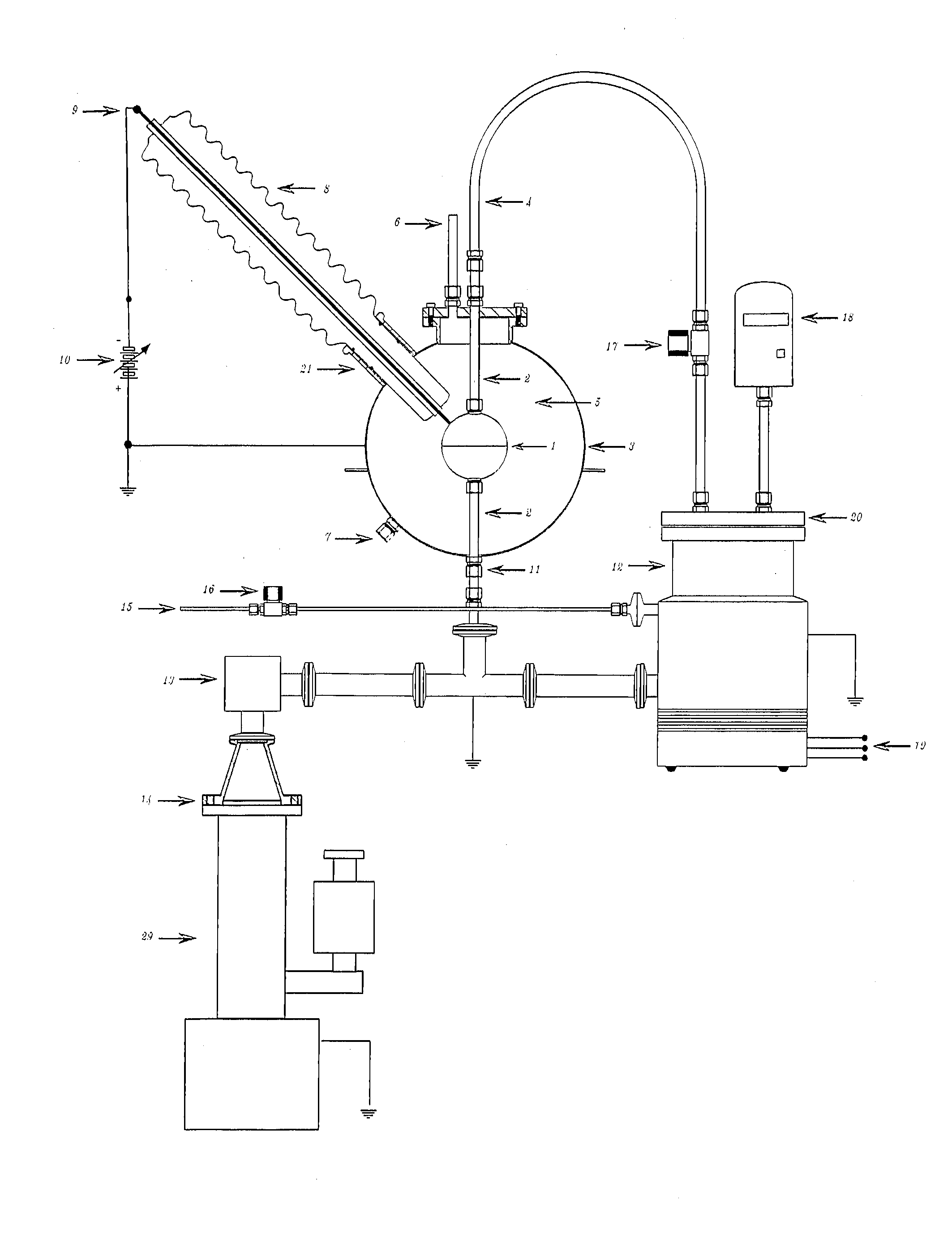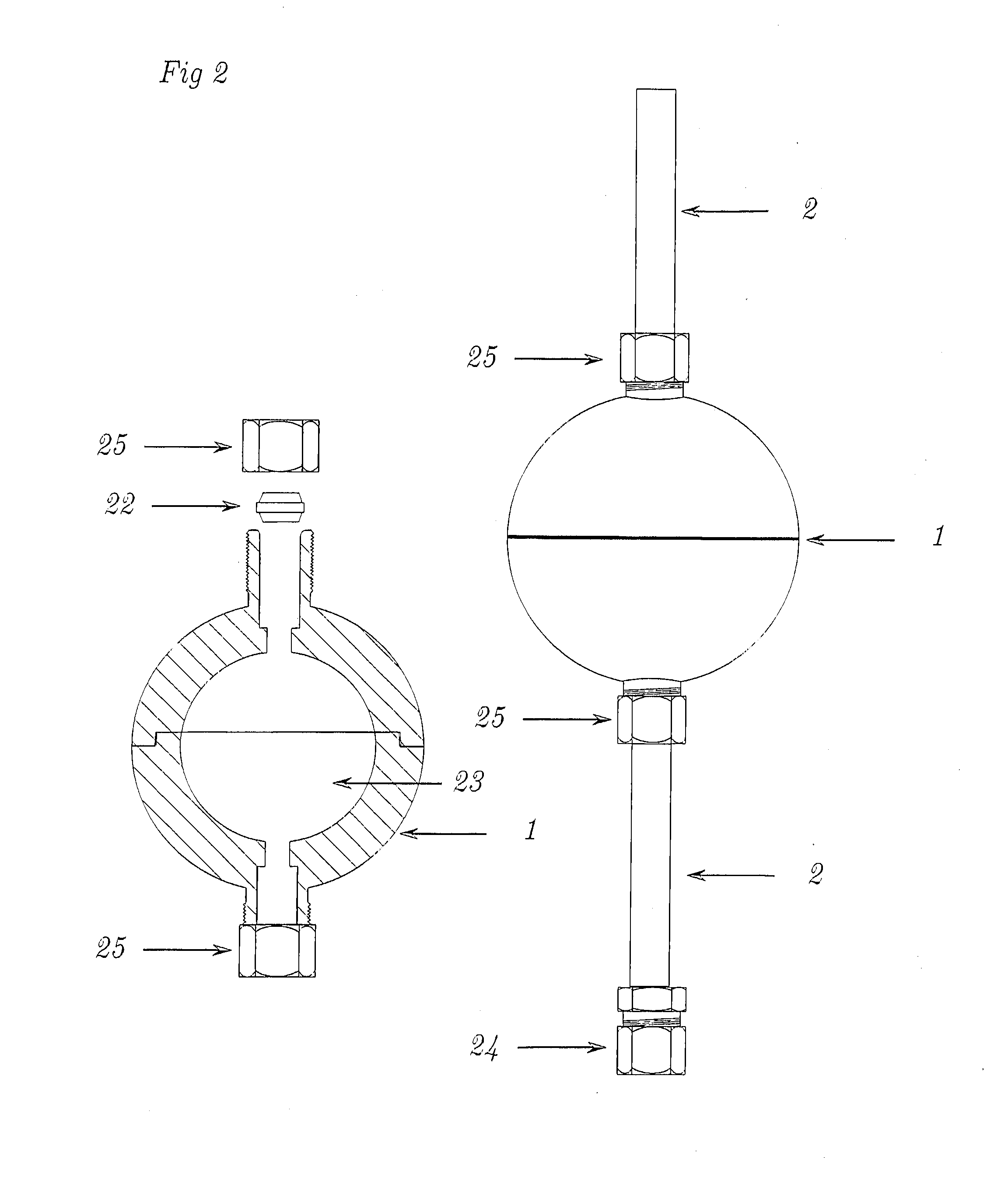Reactor For Producing Controlled Nuclear Fusion
- Summary
- Abstract
- Description
- Claims
- Application Information
AI Technical Summary
Benefits of technology
Problems solved by technology
Method used
Image
Examples
Embodiment Construction
of the Apparatus
[0015]The subject of this invention is the novel design of the apparatus, which when operated correctly can create a deep electrostatic potential energy well into which ions of Deuterium and / or other elements known to have a low barrier to Fusion, may fall with sufficient energy to overcome the electrical repulsion and breach the Coulomb barrier. In the following example we shall refer to the common D+D reaction, however it should be made clear that this invention is not limited in any way to this reaction. The novel reactor is the key component of this apparatus, and it is constructed from a stainless steel (or similar conducting material) spherical anode shell (3), which is connected to ground potential, in it's centre there is a smaller spherical cathode (1), with a hollow core (23) which is connected by way of a copper rod (9) through a ceramic feed-through (8), to a high voltage negative output DC power supply (10). The cathode (1) is constructed from stainless ...
PUM
 Login to View More
Login to View More Abstract
Description
Claims
Application Information
 Login to View More
Login to View More - R&D
- Intellectual Property
- Life Sciences
- Materials
- Tech Scout
- Unparalleled Data Quality
- Higher Quality Content
- 60% Fewer Hallucinations
Browse by: Latest US Patents, China's latest patents, Technical Efficacy Thesaurus, Application Domain, Technology Topic, Popular Technical Reports.
© 2025 PatSnap. All rights reserved.Legal|Privacy policy|Modern Slavery Act Transparency Statement|Sitemap|About US| Contact US: help@patsnap.com



